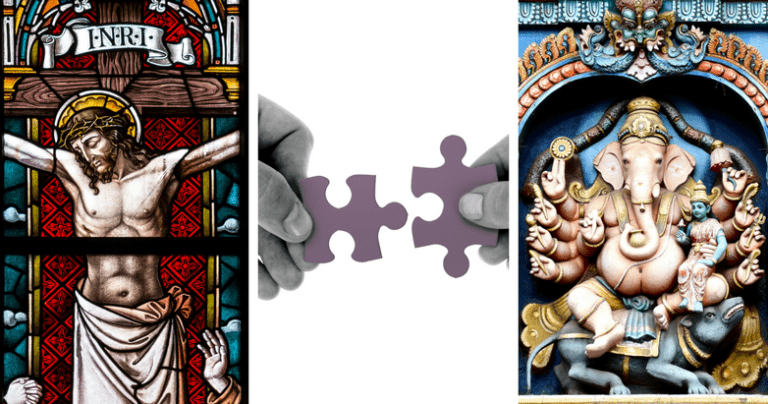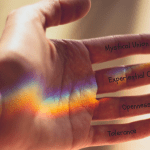
In previous articles, I have explained different types of interfaith (including activities and stages of communications), but I have not made an adequate distinction between interfaith and interspirituality.
Allow me to fix that.
Two words explain the difference between the concepts rather well.
Interfaith seeks harmony.
Interspirituality is an exploration.
Creating Harmony
The Parliament of World Religions is a great example of interfaith harmony. Their stated goal is to:
“… cultivate harmony among the world’s religious and spiritual communities and foster their engagement with the world and its guiding institutions in order to achieve a just, peaceful and sustainable world.”
Harmony is about trying to understand each other and working together towards shared interest and goals while at the same time accepting and respecting differences in belief and culture.
The organization even goes further by stating that they directly seek:
“… to promote interreligious harmony, rather than unity. The problem with seeking unity among religions is the risk of loss of the unique and precious character of each individual religious and spiritual tradition; this understanding is key to our framework.”
Seeking unity can risk the loss of unique and precious character.
This is true.
If you think about it, we all make this distinction to some degree.
We work with other people but we don’t expect everyone to be exactly like us even when they share the same religion and/or values.
Most of us respect each other’s character traits.
And even if the Internet and news say otherwise, a vast majority of us are finding ways to live together in harmony.
Exploring Interspirituality
The term we use in relation to interspirituality is exploration.
Exploration is at the heart of human nature.
We explore our surroundings—from nature to space—explore each other and explore ourselves.
According to Dictionary.com the word exploration means:
“The investigation of unknown regions.”
To me, this is spirituality in a nutshell—the internal investigation of unknown regions.
All the world’s religions have been involved in this internal investigation in one way or another.
Interspirituality is, therefore, the exploration of the differences between internal investigations done by mystics from different faith traditions and the comparison to our personal explorations.
In my column on the difference between experifaith and storyfaith, I pointed out that this internal aspect of religion, which is most commonly referred to as spirituality, is not concerned with stories, traditions, or culture, but rather with direct perception or experience.
Therefore, while interspirituality may look at a variety of scriptures for reference, it is more interested in spiritual practices and the results they produce than in particular stories, traditions or cultural practices.
The questions that interspirituality focuses on are, for example:
- Are these practices similar?
- Are the outcomes similar?
- Is there a difference between my experiences and their recorded outcomes?
To the interspiritual seeker, these questions are extremely interesting.
And, because the focus is on shared experiences, there is no fear of losing “a unique and precious character.” Even if two people, who do not share the same religion, feel the same experiences in meditation, prayer or during a ritual, they are still the same people afterward and can maintain their personal belief systems.
Understanding each other’s experiences does not mean that we melt into a religiously androgynous and indistinguishable mass.
We can be children of our own culture and still explore the interspiritual region with great interest.
The Difference Between Harmony and Exploration
When we use interfaith to seek harmony, it is to remind us that, even though we are different, we can live together in relative peace and respect each other.
When we explore interspirituality, on the other hand, we acknowledge, that despite differences in beliefs and culture, spiritual practices have generated some universal experiences that deserve both our time and attention.
For the average person, achieving harmony is more than enough. As a species, we would be pretty well off if we could just live and let live while working together towards general wellbeing. In fact, we should all be working towards that goal (and, again, most people are).
For the spiritual seeker, however, interspiritual exploration has never been easier. We have, for the first time in history, easy access to all the cross-cultural and cross-religious literature we could ever read, including descriptions of spiritual practices and their benefits. This is a real Golden Age for those of us who are interested in interspiritual exploration.
To conclude, when you are in doubt about whether something is interfaith or interspirituality, use the qualifying words. If it seeks harmony, then it is likely interfaith. If it encourages exploration, then it is likely interspirituality.
Please, leave comments if you want to add to these ideas or if you see the terms differently than I do.
Gudjon Bergmann
Author & Interfaith Minister
Visit Experifaith.org to learn more about a model that promises to facilitate both interfaith harmony and interspiritual explorations.
Pictures: Pexels.com CC0 License












